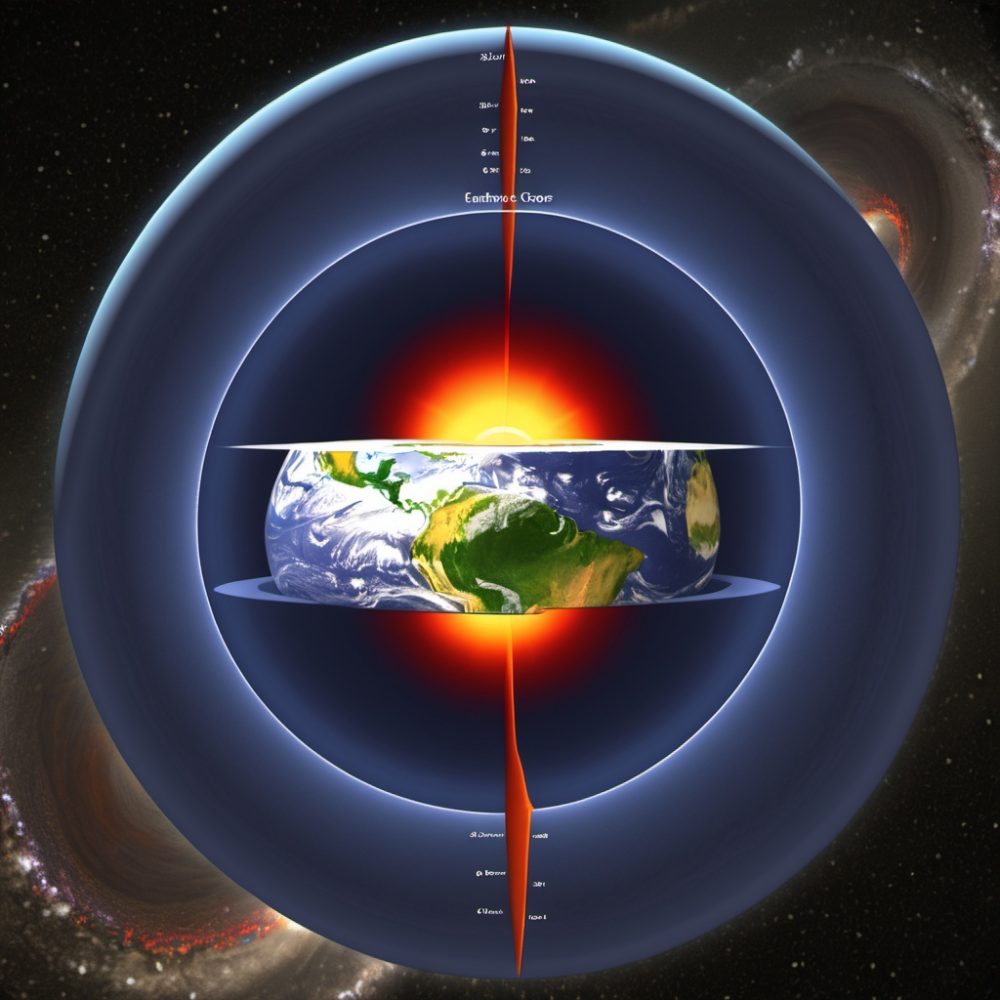
Earth’s Inner Core: Changes in Rotation & Day Length
Recommended for Earth's Core
Earth’s Hidden Heartbeat Skips a Beat: A Mystery Unfolds Deep Within
Ever think about what’s happening beneath your feet? Miles below the surface, a molten inferno churns, and at its heart lies a solid iron ball – Earth’s inner core. It’s not just sitting there, folks. This core is spinning, a secret clock influencing our days and nights.
But hold on to your hats because scientists just picked up something strange. This subterranean timekeeper might be slowing down. Imagine a cosmic dance, where the Earth’s layers move in sync, and suddenly the lead dancer misses a step.
What does this mean for us? Will our days get longer? Is our planet’s internal clock malfunctioning? And what secrets are hidden within this metallic heart?
Get ready to journey to the center of the Earth, where the line between science and mystery blurs. We’ll delve into the latest research, unravel the complexities of our planet’s core, and explore the implications of this surprising discovery. It’s a story of seismic shifts, changing rhythms, and the hidden forces that shape our world.
The Earth’s Secret Heartbeat
Picture this: Earth, our home, isn’t just a solid rock. Deep beneath our feet, there’s a hidden world, a core of molten metal churning like a witch’s cauldron. And at the very center? A solid heart of iron and nickel, the Earth’s inner core.
This core isn’t just sitting there idly. It spins, a secret heartbeat, influencing our planet in ways we’re only beginning to understand.
Now, hold onto your hats because things are getting interesting. Scientists have been listening to the Earth’s heartbeat, using seismograms (like an EKG for the planet) to study this hidden world. And they’ve stumbled upon something peculiar: the inner core is slowing down.
“Slowing down?” you ask. “What does that even mean?”
Well, imagine a spinning top gradually losing momentum. It’s like that, but on a planetary scale. The Earth’s inner core, which usually spins a bit faster than the rest of the planet, is starting to fall behind.
A Conversation with the Earth’s Core
Scientist 1: “I can’t believe it! Look at these seismograms. The inner core’s rotation is changing.”
Scientist 2: “You’re kidding! But how? Why?”
Scientist 1: “We don’t know for sure yet. But it’s definitely slowing down. It’s like the Earth’s clock is changing its tune.”
Scientist 2: “This could have huge implications. We need to understand what’s happening.”
The Puzzle of Time
Time, as we know it, is tied to the Earth’s rotation. One full spin equals a day. But what happens when the Earth’s inner core changes its rhythm? Could it mess with our concept of time?
The answer is a bit complicated. While the inner core’s slowdown might cause the length of a day to change, it’s talking about fractions of a second. So, no need to reset your alarm just yet.
Leap Seconds and the Shifting Rhythm
But wait, there’s more! Have you ever heard of leap seconds? These extra seconds are added to Coordinated Universal Time (UTC) to keep our clocks in sync with the Earth’s rotation. But as the inner core slows down, we might need fewer of these leap seconds. It’s like the Earth is adjusting its own internal timekeeping.
Melting Ice and the Dance of Rotation
Climate change is playing its own role in this cosmic dance. The melting of ice in Greenland and Antarctica is actually changing how the Earth spins. It’s a reminder that everything on our planet is interconnected, from the polar ice caps to the molten metal in the Earth’s core.
Peering into the Depths
Studying the Earth’s inner core is no easy feat. It’s like trying to understand the workings of a clock by listening to it tick from miles away. But scientists are clever. They use seismic data from earthquakes and even nuclear tests to create a picture of this hidden world.
The scientific community is buzzing with theories about why the inner core is slowing down. Some believe it’s a natural cycle, part of a decades-long pattern. Others point to the complex interactions between the inner core, the outer core, and the Earth’s mantle.
The Unraveling Continues
One thing is for sure: this discovery opens up a whole new realm of questions about our planet’s inner workings. It’s a reminder that even the ground beneath our feet is not as static as we might think. There are mysteries yet to be solved, secrets waiting to be unearthed.
The slowing down of the Earth’s inner core is just one piece of this intricate puzzle. But it’s a piece that could change our understanding of time, our planet’s rotation, and the forces that shape our world.
So, what do you think? Are you ready to dive deeper into the Earth’s heart of mysteries?
Watch a video
Journey to the Center of the Earth: What Awaits?
Curious Times is a leading newspaper and website for kids. We publish daily global news aligned to your learning levels (also as per NEP 2020): Foundational, Preparatory (Primary), Middle and Senior. So, check out the News tab for this. We bring kids’ favourite Curious Times Weekly newspaper every weekend with top news, feature stories and kids’ contributions.
Curious Times News Program for Schools for FREE. Over 5,000 schools and teachers from all over the world have joined our programme so that students and teachers can get FREE Educative Newspaper. Here, kids can take part in world events and win prizes and certificates for free through their schools.
The following social media platforms allow you to communicate with us: Instagram.
0 (Please login to give a Curious Clap to your friend.)
